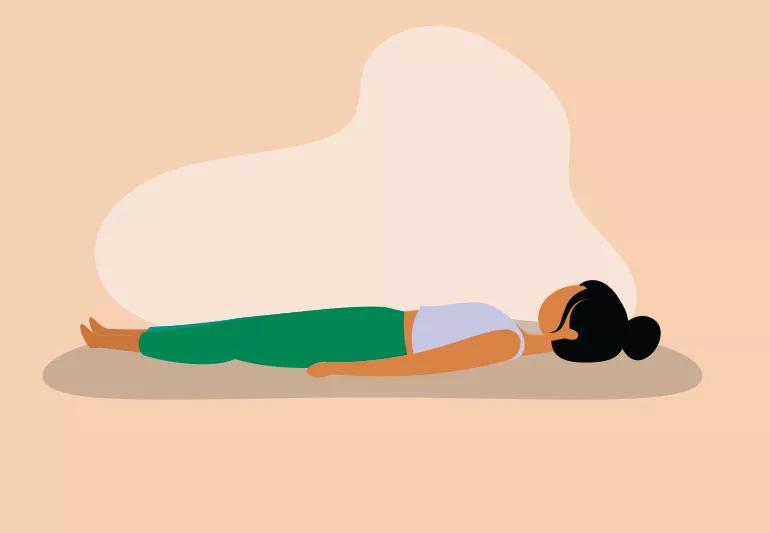Yoga for Mental Health: Reduce Anxiety and Overthinking
Yoga combines body postures, breathing exercises, meditation, and mindfulness to enhance mental health. This comprehensive guide explores how regular yoga practice can reduce anxiety, overthinking, stress, and promote emotional balance, clarity, and peace of mind.
Understanding Mental Health and Yoga
Mental health involves emotional, psychological, and social well-being. Yoga supports mental health by regulating stress hormones, calming the nervous system, improving focus, and encouraging mindfulness. Neuroscience studies show yoga increases gamma-aminobutyric acid (GABA) levels, which are associated with reduced anxiety and enhanced mood.
Key Benefits of Yoga for Mental Health
- Reduces cortisol (stress hormone) levels
- Improves sleep quality and reduces insomnia
- Enhances focus, memory, and cognitive clarity
- Balances the nervous system and energy levels
- Promotes emotional regulation and mindfulness
- Strengthens resilience against stress and overthinking
Step-by-Step Yoga Poses
1. Warrior Pose (Virabhadrasana II)

Warrior Pose – Enhances focus and courage
Stand with legs wide apart, bend the front knee 90 degrees, extend arms parallel to the floor, and gaze forward. Hold 30-60 seconds per side. Benefits: Strengthens legs, improves focus, boosts confidence.
2. Tree Pose (Vrikshasana)

Tree Pose – Improves balance and concentration
Stand on one leg, place the other foot on inner thigh, palms together at chest. Benefits: Enhances balance, reduces mind chatter, stabilizes emotions.
3. Legs-Up-the-Wall (Viparita Karani)

Legs-Up-the-Wall – Restorative and calming
Lie on your back with legs vertical against a wall. Relax arms by your side. Benefits: Reduces fatigue, calms nervous system, relieves anxiety.
4. Supported Bridge Pose (Setu Bandhasana)

Supported Bridge – Opens chest and reduces tension
Lie on your back, bend knees, feet hip-width apart, lift hips, place a block under sacrum. Benefits: Relieves stress, improves blood flow, opens chest and heart.
5. Yoga Nidra

Yoga Nidra – Deep conscious relaxation
Lie down, close eyes, follow guided audio. Benefits: Deep relaxation, reduces stress and anxiety, improves sleep and emotional balance.
Breathing Practices for Anxiety and Overthinking
- Alternate Nostril Breathing: Balances hemispheres of brain, reduces mental clutter.
- Box Breathing: 4-4-4-4 inhale-hold-exhale-hold pattern to calm nervous system.
- 4-7-8 Breathing: Long exhale to reduce anxiety and regulate heart rate.
- Bhramari Breath: Humming vibration to release tension.
- Dirgha Pranayama: Full yogic breathing, filling belly, chest, and upper lungs.
Mindfulness & Meditation Techniques
Incorporate yoga nidra, guided meditation, and mindfulness exercises daily. Journaling, gratitude practice, and visualization complement physical yoga for mental clarity.

Guided Meditation – Enhances focus and mindfulness
Nutrition & Lifestyle for Mental Well-being
- Omega-3 rich foods (salmon, chia seeds, flaxseed)
- Magnesium sources (spinach, pumpkin seeds, dark chocolate)
- Antioxidants (blueberries, turmeric, green tea)
- Probiotics (yogurt, kefir) for gut-brain connection
- Avoid excessive caffeine and processed sugars
Trimester-wise Yoga for Pregnant Women
- First Trimester: Gentle stretches, deep breathing, meditation.
- Second Trimester: Strengthening poses, supported bridge, seated forward bends.
- Third Trimester: Relaxing poses, legs-up-wall, restorative supports, guided visualization.
FAQs
Can yoga cure anxiety? Yoga supports management and reduction but should complement professional care.
How long should I practice? Daily 20-45 minutes is optimal for mental benefits.
Safety Tips
- Start gently, progress gradually
- Listen to your body to avoid strain
- Use props and support if necessary
- Practice in calm, quiet environment
